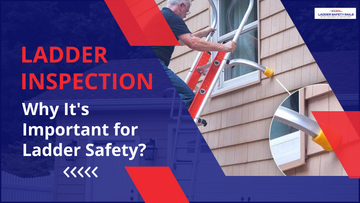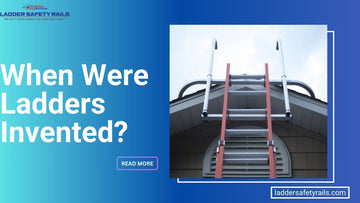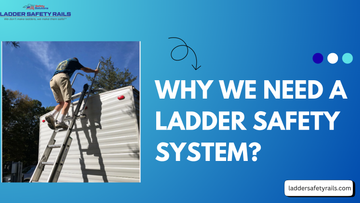
Ladders are essential tools in many workplaces and homes, enabling us to reach high places safely. However, they can pose significant risks if not properly maintained and inspected. This is where ladder inspection comes into play. Conducting regular ladder inspections ensures that your ladder is safe to use and helps prevent accidents.
In this blog, we'll discuss why ladder inspection is crucial, what to include in a ladder inspection checklist, and answer some frequently asked questions about ladder safety.
Why Is Ladder Inspection Crucial?
Ladder safety starts with proper inspection. Regular ladder inspections help identify potential hazards such as structural damage, wear and tear, or other defects that could lead to accidents. By addressing these issues early, you can prevent falls, injuries, and even fatalities. Here's why ladder inspection is important:
-
Prevents Accidents:
Regular inspections help catch defects before they cause accidents. This is especially important in workplaces where ladders are used frequently.
-
Ensures Compliance:
Many regulations, including OSHA ladder inspection checklist, mandate regular ladder inspections. Compliance with these regulations not only avoids legal issues but also promotes a culture of safety.
-
Prolongs Ladder Lifespan:
Regular maintenance and inspections can extend the life of your ladders, saving you money in the long run.

Ladder Inspection Checklist:
To ensure thorough inspections, it's helpful to use a ladder inspection checklist. Here’s what you should include in your checklist:
1. Visual Inspection:
- Check for Cracks and Dents: Look for any cracks, dents, or deformities in the ladder's rungs, rails, and feet.
- Inspect for Corrosion: Especially for metal ladders, check for rust or corrosion that could weaken the ladder.
- Look for Loose or Missing Parts: Ensure all bolts, screws, and rivets are intact and tightly secured.
2. Functional Inspection:
- Test Stability: Make sure the ladder stands firmly on the ground and does not wobble.
- Check the Locks and Hinges: Ensure that all locks and hinges are functioning correctly and securely.
- Assess the Feet and Shoes: Check that the ladder’s feet and shoes are in good condition and provide adequate grip.
3. OSHA Ladder Inspection Checklist:
- Review Compliance Standards: Ensure your ladder meets the OSHA standards for ladder safety- 1917.119 - Portable ladders. | Occupational Safety and Health Administration (osha.gov), which includes inspecting for structural integrity and proper use.
Ladder Safety Checklist:
In addition to the inspection checklist, maintaining a ladder safety checklist is essential. This helps ensure that the ladder is used correctly each time. Key points include:
- Correct Ladder for the Job: Always use the right type and size of ladder for the task.
- Proper Angle and Placement: Set the ladder at the correct angle (usually a 4:1 ratio) and ensure it is placed on a stable surface.
- Three Points of Contact: Maintain three points of contact (two hands and one foot or two feet and one hand) while climbing.
- Do Not Overreach: Keep your body centered on the ladder and avoid overreaching to prevent tipping.

Conclusion:
Regular ladder inspections are vital for maintaining ladder safety. By following a detailed ladder inspection checklist and adhering to safety protocols, you can prevent accidents and ensure a safe working environment. Remember, ladder safety is not just about compliance; it’s about protecting yourself and others from potential harm. Stay vigilant, inspect regularly, and use ladders safely to avoid unnecessary accidents.
Frequently Asked Questions (FAQs)
-
How often should ladders be inspected?
Ladders should be inspected before each use and periodically during regular maintenance checks to ensure they remain in safe working condition.
-
Is it only necessary to inspect a used ladder?
No, both new and used ladders should be inspected. New ladders should be checked for manufacturing defects before first use.
-
How to inspect a ladder for safety?
Inspect a ladder by checking for structural damage, ensuring all parts are secure, and testing its stability. Use a ladder inspection checklist to ensure a thorough evaluation.
-
When should you inspect a ladder?
Ladders should be inspected before each use and during scheduled maintenance checks to comply with ladder inspection requirements and ensure safety.
Read More Blogs:

How to Use a Ladder for Cleaning Gutters: A Complete Guide






